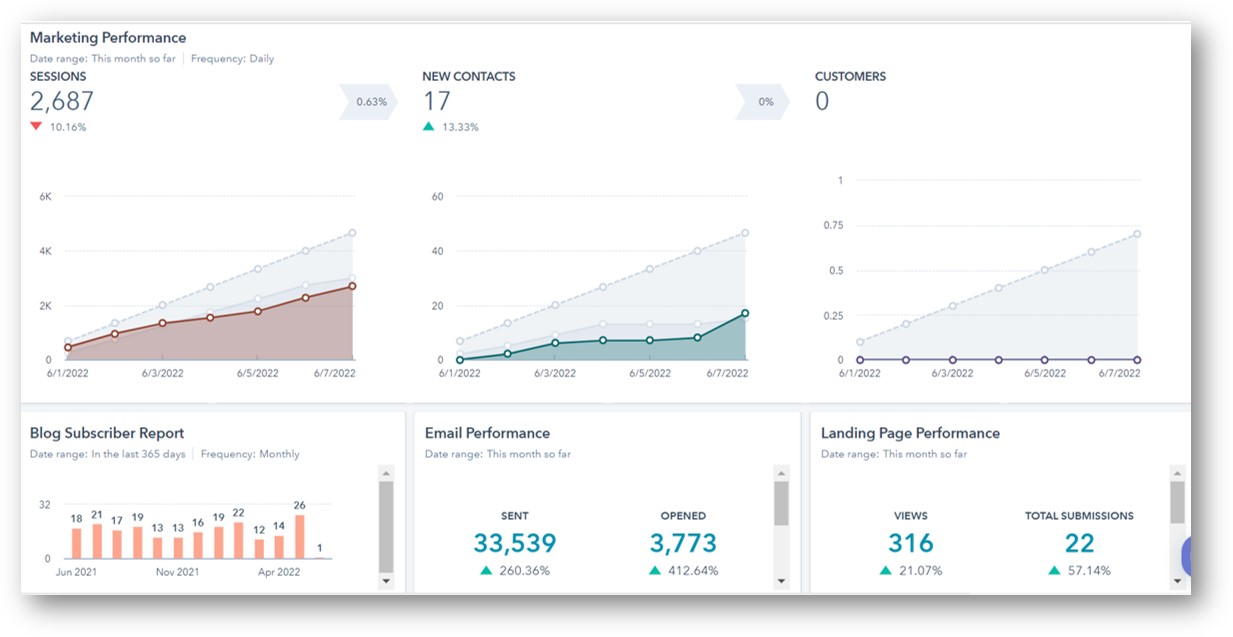
How Long Does It Take To Produce Leads For A B2B Company?


 If you’re at a B2B company and you don’t have enough leads to grow your business, this is the most important question facing your organization right now. Even if you know what to do or who to hire, how long is it going to take?
If you’re at a B2B company and you don’t have enough leads to grow your business, this is the most important question facing your organization right now. Even if you know what to do or who to hire, how long is it going to take?
Our answer is the same as any highly qualified physician. We’ll have to see how you respond to the treatment plan. We’ll have to see how the prospects respond to the campaign. Then we’ll have data to better answer your question.
That makes sense, right?
You trust your doctor and you trust your experienced marketing professional, too. But for the sake of educational purposes, it might be helpful to see what actually goes into planning, setting up, managing and optimizing an ongoing lead generation campaign.
Not too many people actually know how to do this, nor have they successfully executed one.
When you see what’s involved to do this right, I’m hoping you have new clarity around how long it takes. Remember, if it was easy, everyone would be doing it.
Planning
Strategy before tactics. If you think you’re going to set up your Instagram ad account today, start launching ads tomorrow and see leads the next day, guess again.
Instead, you need to plan out your strategy for any lead generation, demand generation or account-based marketing campaigns. Would you go to war without a plan? Would you build a house without a plan? Would you try to win a game without a plan?
You can’t run any campaigns without a plan either.
The plan answers some basic questions:
- Who are you going to try and attract with your tactics?
- What are their key issues or pains?
- What story do you have to tell them to get their attention?
- How does this story fit in with the company’s overall story?
- What do you need to offer them to get them to engage?
- How many times do you think you have to tell them the same story and share your offer before they act?
- Where is the best place to reach them with your story and offer?
- What medium will get them to engage the fastest?
- What assets are needed for this campaign?
- Are there any technical requirements for this campaign? What are they?
- What do you want to invest in this campaign?
- How long do you want to run this campaign?
- What other campaigns might be following it?
- What results do you expect from this level of investment and over what time period?
Once you have answers to all these questions, you can write a campaign plan that is relatively complete without needing to create a bible.
This campaign planning framework should be part of every campaign going forward. Anyone in marketing can create the campaign planning framework, share it with everyone else and get it approved or rejected based on its merits.
You can plan to have campaigns running once a month or once a quarter, or you can have multiple campaigns running concurrently. This would depend on your product/service offering, budget and bandwidth to actively manage more than one campaign at a time. More on that later.
You’re going to notice that delivering successful campaigns means the work required gets exponentially harder as we go on.
Planning for a campaign is the easiest part of the process. When we get to the setup, it gets harder.
Setup
During setup, you’ll be gathering or creating everything you need to execute your campaign as designed in the plan.
This means if you need a landing page, you have to write it, design it and set it up in HubSpot or whatever marketing automation tool you’re using. You might need multiple landing pages.
Some of the regular assets we see in campaigns include emails, follow-up emails, landing pages, confirmation pages, delivery pages, chat for the pages, videos for the pages and graphics for the pages.
We’re just getting started on what’s required to set up a campaign.
You’re also going to need the story and messages for the campaign. If the campaigns are vertically focused, this might mean you need specific sets of assets for each vertical.
It’s likely that you’ll need educational content for your campaign. Remember, people who are early in their buyer journey don’t want to talk to you or a sales rep, but they might be willing to read something, watch something or attend something.
These assets need to be identified, written, designed and published.
You’re going to need a full schedule that maps out every single campaign interaction over the course of the setup and execution stages of the campaign.
If you decide to do a webinar or event, you’ll need everything for that event, including the presentation or, if it’s in-person, event signage.
If you’re offering a late buyer journey offer, you’ll need to coordinate with sales so they understand the offer and how to deliver it. They might need materials to do the delivery.
No detail can be left uncovered. Every task needs to be assigned to someone, and every task needs to have a deadline to ensure the campaign is ready to go on time.
Once everything is done and set up properly, plan some time to do some testing. This ensures everything is firing as planned and the experience you’re working to create is remarkable.
Yes, this is a challenging stage, and it takes time to get a campaign set up correctly.
Execution
I would say things get a little easier here, but that’s not the truth. It’s rare that any campaign executes flawlessly, so there are issues that need to be addressed quickly.
Here, people are responsible for launching various parts of the campaign. Some of this can be automated via HubSpot or your marketing automation platform. Don’t forget to include sales in the campaign, or at least brief them in advance of the campaign launching.
Try to set some reasonable expectations with everyone (including management) about reporting on campaign performance. Getting questions every day about whether there are any leads yet might be annoying after a few days.
Instead, set up some campaign dashboards in advance and share them when there is enough data to draw some initial conclusions.
Sometimes the most important part of execution is patience. Letting the campaign roll out as planned can require a steady hand and calming thoughts.
Any campaign that’s running for more than a month probably needs a month of solid performance before any significant adjustments should be proposed, and NEVER cancel a campaign after just 30 days. There’s rarely enough data to make that decision.
Analysis
Let’s dig into analysis because this is where the beginners are separated from the pros. To analyze your campaigns properly, you’ll need to go back to the planning doc. What were the performance expectations for this campaign and over what time period?
By the time you get to this stage, you should have some expectations around performance.
For example: You expected to see 100 visitors to the landing page, 10 visitors from the email campaign to the house list, 80 visitors from the paid Instagram ads and 10 visitors from direct traffic sources. How did you do?
Perhaps you also expected a 20% conversion rate on the landing page, which would have produced 20 new marketing-qualified leads (MQLs) from the campaign. How did you do? What source highlighted above produced the most MQLs?
Finally, how much did it cost to generate those results, and are the investment numbers in line with expectations?
It might make sense to evaluate the quality of those 20 MQLs. Have any converted into sales-qualified leads (SQLs) yet? Is the lead score model you’re running able to identify high-quality MQLs for specific sales follow-up?
This would be very interesting data at this point in the campaign.
You should have performance expectations for each month of the planned campaign, and if you’re running multiple campaigns over multiple months, these should add up to help you evaluate your overall campaign performance in addition to specific campaign performance.
Standard campaign dashboards like the one pictured here can be created in advance of the campaign and shared with interested parties, giving them access to campaign performance data in real time.

In most cases, you might need a couple of standard campaign dashboards that you run for all your campaigns. It’s good practice as part of your revenue operations effort to regularly check these dashboards to make sure they are reporting correctly.
Over time, your dashboards might get more intricate and detailed based on what data you are interested in analyzing.
Don’t get hung up on the dashboards. Instead, focus on uncovering the insights buried in the data. The dashboard should clearly show you what areas need your attention. What parts of the campaign are working well, what parts are just working OK and what parts aren’t working at all?
You need these insights, and they are the most challenging part of campaign analytics.
Optimization
This brings us to the optimization stage of any campaign execution. No campaign ever rings all the bells out of the gate! Every single campaign we’ve ever run requires constant optimization to make it work and to make it work well.
To do this right, you need an optimization methodology.
At Square 2, we take it step by step. Is the campaign generating visitors? Yes? Then we move on. No? Then we look at why and what we can do to fix it. Typically, we try to make one change at a time, so that we know what’s working and what’s not. If you make more than one change at a time and things turn around, you don’t know which change contributed to the improved results.
It’s an old experimentation technique but it works today. Change only one variable at a time when you redo your experiments. It might take longer, but it provides a better learning platform for sustained improvements over time. Less guessing makes for more certainty.
After we get the visitors, we move on to evaluate the conversions or MQLs. Are these coming in as expected? Yes? Then we move on. No? Then we look at why. This might mean adjustments to the landing page, offer, CTA or ad copy.
We’ll make a series of adjustments here and continue to evaluate the results.
Once we get the leads coming in, we’ll ask about the quality of those leads and if they’re progressing into sales opportunities. If yes, great. If not, then we have to look at who we’re attracting and why they’re not moving along.
Depending on the campaign, it might take a couple of months to make all these tweaks and get a campaign humming. But once it does, the leads flow in and the sales follow.
Timing
This brings us all the way back to the question we asked in the title of this article. How long does it take to produce leads for a B2B company?
You should have a much better perspective on what goes into producing leads these days.
Our engagements run a highly specific campaign methodology designed to generate results, so I would venture to say this approach produces results faster than what most companies do.
Here’s a range for each stage in the campaign execution methodology. Keep in mind results will vary by organization. The more dedicated resources you can apply to the work, the faster you can get through it and see results.
Planning – Between one week and four weeks. Some of the variability is driven by the complexity and the number of campaigns you’re planning. Variability also has to do with the number of dedicated resources working on the plan.
In addition, ongoing planning should be considered every 90 days based on specific business goals and objectives.
The planning stage should also include establishing a set of agreed-on metrics based on campaign goals and specific execution. These goals can change as the campaign rolls out.
For example, the key metric in the first month might be visitors to a landing page. Then the key metrics in the second month might be the conversion rate on that page and MQLs generated. Metrics in the third month might include the previous numbers plus sales leads generated.
Setup – Between one and eight weeks. Again, the larger and more complex plans are going to require many more assets and materials, which would take longer to get ready. The more dedicated people working to get your campaign set up, the faster you’ll be ready to roll.
Don’t forget to leave some time for testing prior to launch.
Execution – There’s really no time frame around execution. You can be running a three-week campaign or a three-month campaign. The guidance here is that you should ALWAYS be running some type of campaign. Demand generation, lead generation and sales growth should NEVER sleep.
When it comes to execution, make sure that each of these stages is planned. This means it might take one month to get a campaign running long enough to start looking at optimization, another month of active optimization and then a final month of smooth-running results.
Analysis – This is also an ongoing practice that should never stop. This overlays every campaign you’re running and should be the driver for any ongoing optimization.
Some campaign analysis should be done daily, while other numbers should be looked at weekly. Do a general overall performance review monthly.
The daily and weekly analysis should drive the in-campaign optimization. The faster you can cycle through your analysis and get an action plan for optimization, the faster you’ll see better results.
Optimization – This is by far the most important phase in any campaign, and it usually makes or breaks the campaign’s success. Optimization should be part of every week’s work around the campaign during the execution stage.
The testing, upgrades and updates that get done are usually seen during the second month of an active campaign. We recommend giving most campaigns at least 30 days to execute before you start making adjustments.
Equally important is your patience around campaigns. It’s rare that campaigns launch and all the metrics are green across the board. Most take time to get right, optimize and settle into the market.
When you’re looking at running campaigns to drive results across your company, you should take a long-term perspective – six months is the minimum, with 12 months usually more appropriate. This means you’re going to commit to running campaigns for six to 12 months before you judge the overall investment and associated results.
Anything less than this is going to cause you to bail out early and never reach critical mass to truly measure the effectiveness of your campaigns. Be patient and stay the course. Remember, marketing is a marathon, not a sprint.

CEO and Chief Revenue Scientist
Mike Lieberman, CEO and Chief Revenue Scientist
Eliminate Hit-or-Miss Marketing Moves
Get advice, tips, tools and guidance to generate more leads for your company in this weekly email newsletter.



Eliminate Hit-or-Miss Marketing Moves
Get advice, tips, tools and guidance to generate more leads for your company in this weekly email newsletter.













